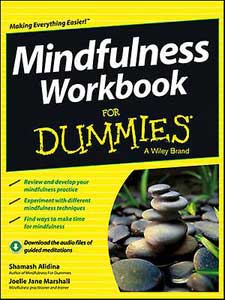From Linkedin Pulse •
In December 2015 I chaired the Mind and Matter conference, a conference focussing on the impacts of mindfulness at work. Over 30 speakers, mostly from well-known organisations, took to the stage to share their experiences of mindfulness in the workplace.
Is mindfulness simply an umbrella term?
Nisha Vas published an excellent post conference summary, in which she commented “What is mindfulness?” It may seem like an odd question to ask after attending a conference on mindfulness, but it is an important one. Within the audience there were many different ideas on what mindfulness is and how it should be implemented.
”It is apparent that there is no strict definition of mindfulness; instead, it is an umbrella term constituting an array of concepts.”
Whilst I understand exactly how Nisha came to this conclusion, I would argue that mindfulness is not, and should not become simply an umbrella term.
Organisational uptake of mindfulness is increasing, but there is still mass confusion about what mindfulness is, and is not.
Nisha raises an important issue. There is still much confusion out there about what mindfulness is and is not. It’s no great surprise when you look at the publicity surrounding publications like ‘The Mindfulness Colouring Book’ and ‘The Ladybird Book of Mindfulness’, or the volume of businesses jumping on the mindfulness bandwagon. Some coaches, with little or no mindfulness training or experience now offer ‘Mindful Coaching’. Other companies are re-branding all sorts of eastern practices as ‘mindfulness’.
Myth vs reality
One parable in the Ladybird book encapsulates two common misconceptions about mindfulness. Firstly, mindfulness training from a workplace perspective does not involve hours of ‘staring’ at something. US Marines programmes, CBMT programmes and WorkplaceMT programmes all involve short practice periods (typically 3 minutes to 15 minutes duration). Secondly it’s not about escaping things you find difficult, it’s about learning to deal better with the challenges that life throws at you – its certainly not about escaping or avoiding them!
You don’t need to be walking barefoot to practice mindfulness. No special equipment is needed to teach mindfulness in a typical work setting. It’s usually taught in a standard meeting room, with chairs, sometimes tables, with attendee wearing everyday work clothing, and not a yoga mat in sight! No one has ever sat on the floor, legs folded in Lotus position, in any course I have ever taught. The GPs, Council workers, teachers, bankers and insurers I have taught tell me that they manage to squeeze in a little mindfulness practice whilst sitting at their desk between appointments, or walking from A to B.
Mindfulness: a simple definition
If mindfulness is to produce desirable work outcomes it’s absolutely essential that organisations have a clear understanding of what mindfulness is and is not. Setting aside eastern definitions of mindfulness and medical and therapeutic definitions of mindfulness, in simple terms, “mindfulness is the ability to pause and observe what’s going on without getting sucked into reactive cycles and knee jerk reactions.”
By tuning into, and increasing your awareness of the interplay between thoughts, emotions and bodily sensations you are better able to maintain an optimum mind state, enabling you to be more productive and effective at work.
What’s the evidence for mindfulness at work?
There are now over 70 workplace specific studies published on the impact of mindfulness at work. (100’s if you also include ACT research). The Journal of Management has recently published a meta-analysis of the impact of mindfulness on the work, authored by a number of well-respected researchers in the field (Contemplating Mindfulness at Work: An Integrative Review). The authors conclude that current evidence links practicing mindfulness with improved performance, relationships at work, and well-being.
- Mindfulness can improve performance – current evidence demonstrates a link between practicing mindfulness and improved job and task performance. It also links mindfulness to improved citizenship behaviour and safety at work.
- Mindfulness can improve working relationships – current evidence demonstrates a link between practicing mindfulness and improved communication and relationship quality. It can assist with conflict management, improve leadership and teamwork. It can also increase empathy and compassion.
- Mindfulness can improve well-being – current evidence demonstrates a link between practicing mindfulness and improvements in physical, psychological and behavioural well-being.
Introducing mindfulness to your workplace
As Nisha concluded in her article “Mindfulness works! It is an effective strategy to achieve states of mind known to improve workplace performance”.
If businesses are serious about changing the way they work, and genuinely want happier, more resilient, more productive employees, it’s essential to become informed buyers. Just because someone is calling it ‘mindfulness’ does not mean to say it is the same ‘mindfulness’ that has been the subject of workplace mindfulness research studies. Beware of cowboys and informed about what you are buying.
1: Choose a teacher who has been adequately trained to teach mindfulness and fits your organisational culture:
- The Oxford Mindfulness centre, Centre for Mindfulness Research and Practice at Bangor, Exeter University, The Mindfulness Association, and independent providers such as Enter Mindfulness all offer recognised teacher training pathways to teach mindfulness generically or to a clinical population. Training is normally split into level 1 (equipping trainee teachers to start teaching mindfulness) and level 2 (competence assessed having gained experience of teaching)
- The Mindfulness Exchange offer WorkplaceMT teacher training specifically developed for those who intend to teach in the workplace, following a level 1, level 2 training model.
2: Choose an approach to teaching mindfulness that will suit your organisation.
There are now a number of established approaches to teaching mindfulness. Here is a brief summary of the key differences and similarities:
- Mindfulness Based Stress Reduction (MBSR) and Mindfulness Based Cognitive Therapy (MBCT) – typically 8 weeks x 2 hours a week with 40 minutes of formal practice required each day. Developed for clinical populations, but can be adapted for use in the workplace
- Mindfulness Based Living Course (MBLC)– typically an 8 week programme similar to the above, but developed for a non-clinical population
- Mindfulness a Guide to finding peace in a frantic world – An MBCT programme adapted for a healthy population. 8 week programme with shortened daily formal practice requirement of around, with around 20 minutes formal practice required each day, build up to longer practice times by the end of the course.
- Corporate Based Mindfulness Training (CBMT) – typically a 10 week programme with a short daily practice requirement
- Workplace Mindfulness training (WorkplaceMT) – typically a 6 week programme with around 20 minutes Formal + informal practice requirement each day.
3: Adapt, by all means, but retain the core elements.
- Change the language by all means
- Experiment with different delivery formats (but bear in mind that this adaptation may make the programme more or less effective – we are still learning what works best from a mindfulness teaching perspective )
- Formal daily practice is important both during and in-between taught sessions
4: Mindfulness may not be the solution
- Mindfulness is not a cure all, and cannot fix toxic working cultures.
- Get the basics right first!
In conclusion, The evidence base for mindfulness at work is growing. Evidence to date suggests that mindfulness training has an impact on cognition, emotion regulation, behaviour and physiology, which impacts on work performance, relationships at work and well-being. Whilst organisational acceptance is increasing, the use of mindfulness as an umbrella term for all things meditation or relaxation based is dangerous and misleading.
Anyone who has ever practiced mindfulness knows that it takes time, effort and perseverence, and at times, it can be anything but relaxing.
If relaxation and improved well-being is the aim, offering staff massages, subsidised gym membership, yoga, generic meditation, tai-chi or qigong may be the solution.
If you want to improve performance, relationships as well as well-being at work, there is a growing evidence base that mindfulness training, delivered appropriately in a workplace setting, has the capability to deliver these outcomes. Evidence informed programmes such as MBCT, MBSR, CBMT, MBLC, or WorkplaceMT may help you achieve this. The choice is yours.



